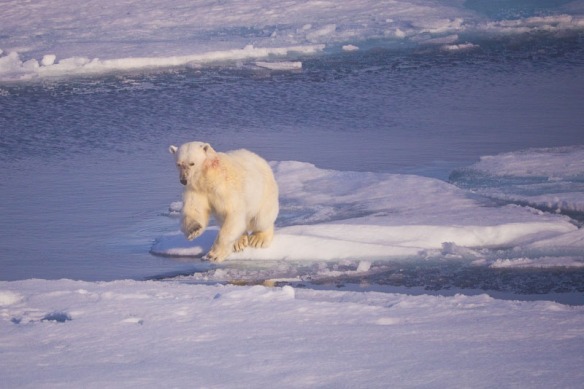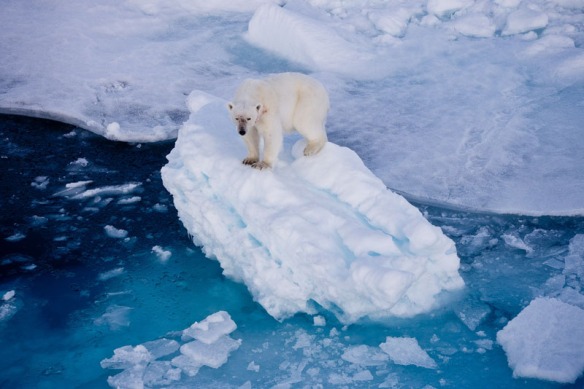The temperature here in the Arctic Circle north of Svalbard has finally reached 37 degrees Fahrenheit (3 degrees Celsius) and the ice hasn’t melted, leaving seals easy prey for hungry Polar Bears. We were fortunate to see eight, healthy bears this day and to get close enough to photograph them. But how do you shoot (with a camera) a white bear against white ice and get a decent exposure?
In the first and last photos there is enough color in the water to average out the camera’s meter reading. Camera meters need to see tone in a standard way – they try to read everything as a neutral gray. In a colorful scene with a large tonal range the meter is able to produce a good, accurate exposure.
The middle photo is a more complicated story. The image is all white except for the shadow and the bear’s nose. The camera meter really wants to make this photo a nice gray, which would make our white Polar Bear angry and you don’t want to piss off a Polar Bear. So for this situation I set the exposure compensation to plus 2/3 s, which overexposes the image enough to give me a nice white scene and still hold the detail.
In the tragic situation of photographing a starving Polar Bear on land, the meter should do okay with the white and brown tones in the scene. If global warming continues and the Polar Bear’s hunting grounds – ocean ice where it finds seals – freeze later in the fall and then melt earlier in the spring, then we will have more to be concerned about than the correct exposure.




Dear ira,
as always well written/said, thank you, hello to Madelon, Beatrice
what a fnaiasttc, spectacular shot, heather! wow! dream work is so wonderful. you had a pretty amazing one there, gal. my dreams always end up being about ridiculous crap that i can't even have fun speculating about. 😦 xo